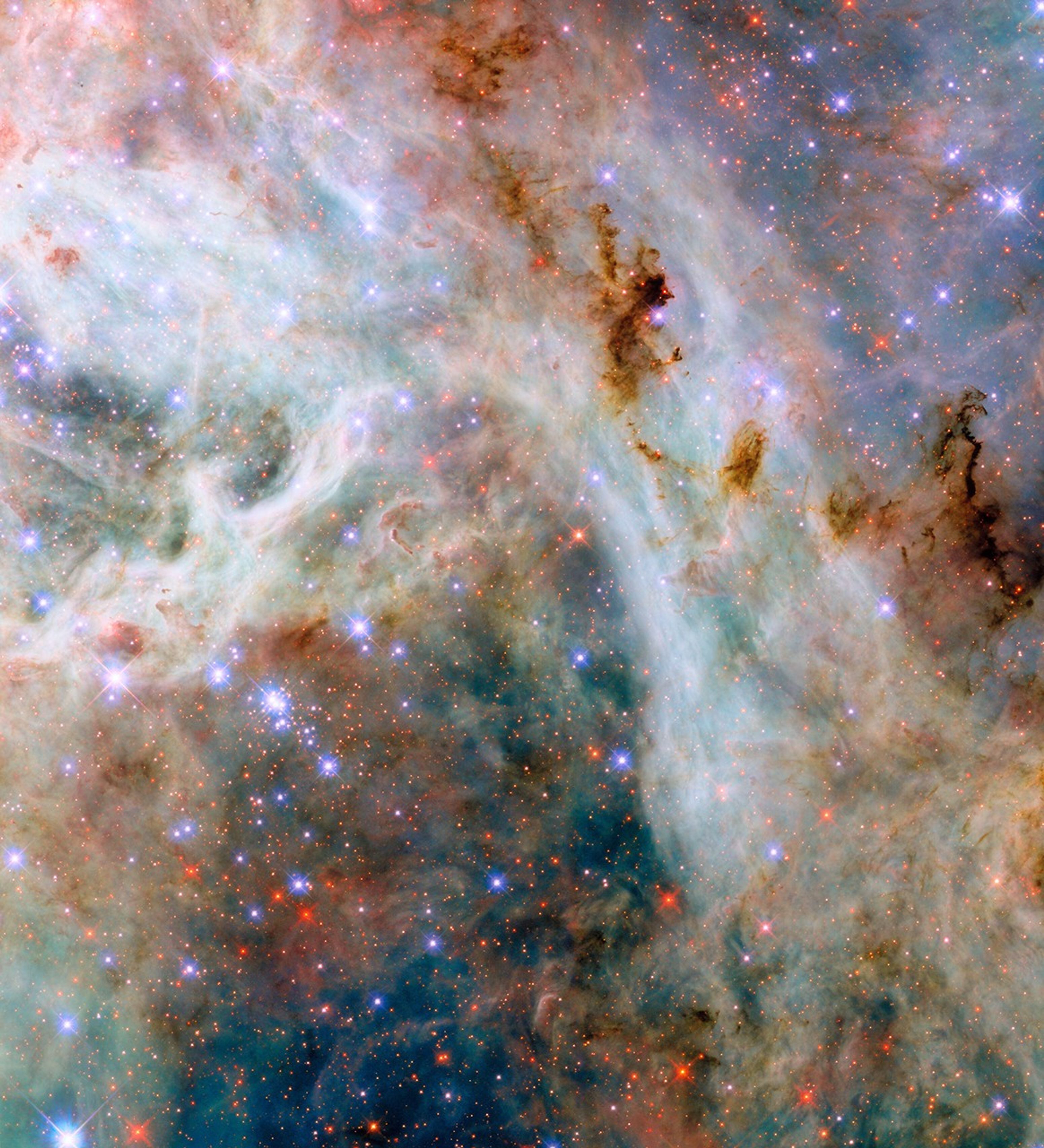2 min read
The universe is a dusty place, as this NASA/ESA Hubble Space Telescope image featuring swirling clouds of gas and dust near the Tarantula Nebula reveals. Located in the Large Magellanic Cloud about 160,000 light-years away in the constellations Dorado and Mensa, the Tarantula Nebula is the most productive star-forming region in the nearby universe, home to the most massive stars known.
The nebula’s colorful gas clouds hold wispy tendrils and dark clumps of dust. This dust is different from ordinary household dust, which may include of bits of soil, skin cells, hair, and even plastic. Cosmic dust is often comprised of carbon or of molecules called silicates, which contain silicon and oxygen. The data in this image was part of an observing program that aims to characterize the properties of cosmic dust in the Large Magellanic Cloud and other nearby galaxies.
Dust plays several important roles in the universe. Even though individual dust grains are incredibly tiny, far smaller than the width of a single human hair, dust grains in disks around young stars clump together to form larger grains and eventually planets. Dust also helps cool clouds of gas so that they can condense into new stars. Dust even plays a role in making new molecules in interstellar space, providing a venue for individual atoms to find each other and bond together in the vastness of space.
Facebook logo @NASAHubble @NASAHubble Instagram logo @NASAHubble Explore More Caldwell 103 / Tarantula Nebula / 30 Doradus Hubble Studies the Tarantula Nebula’s Outskirts Hubble’s New View of the Tarantula Nebula Hubble’s Bubbles in the Tarantula Nebula Hubble Probes Interior of Tarantula NebulaMedia Contact:
Claire Andreoli ([email protected])NASA’s Goddard Space Flight Center, Greenbelt, MD
Share
Details
Last Updated Feb 13, 2025 Editor Andrea Gianopoulos Location NASA Goddard Space Flight CenterRelated Terms
Hubble Space Telescope Absorption or Dark Nebulae Astrophysics Astrophysics Division Emission Nebulae Goddard Space Flight Center Nebulae Star-forming Nebulae The Universe Keep ExploringDiscover More Topics From Hubble
Hubble Space Telescope
Since its 1990 launch, the Hubble Space Telescope has changed our fundamental understanding of the universe.
Exploring the Birth of Stars
Hubble’s Night Sky Challenge
Hubble Focus: The Lives of Stars
This e-book highlights the mission’s recent discoveries and observations related to the birth, evolution, and death of stars.
Read More Details
Finally We wish PressBee provided you with enough information of ( Hubble Captures a Cosmic Cloudscape )
Also on site :
- Watch Live: American Cardinal Robert Provost chosen as new pope
- Former Pomona police officers acquitted in brutality case settle lawsuit against city for $2.5 million
- White smoke appears over Sistine Chapel as Conclave elects new Pope

